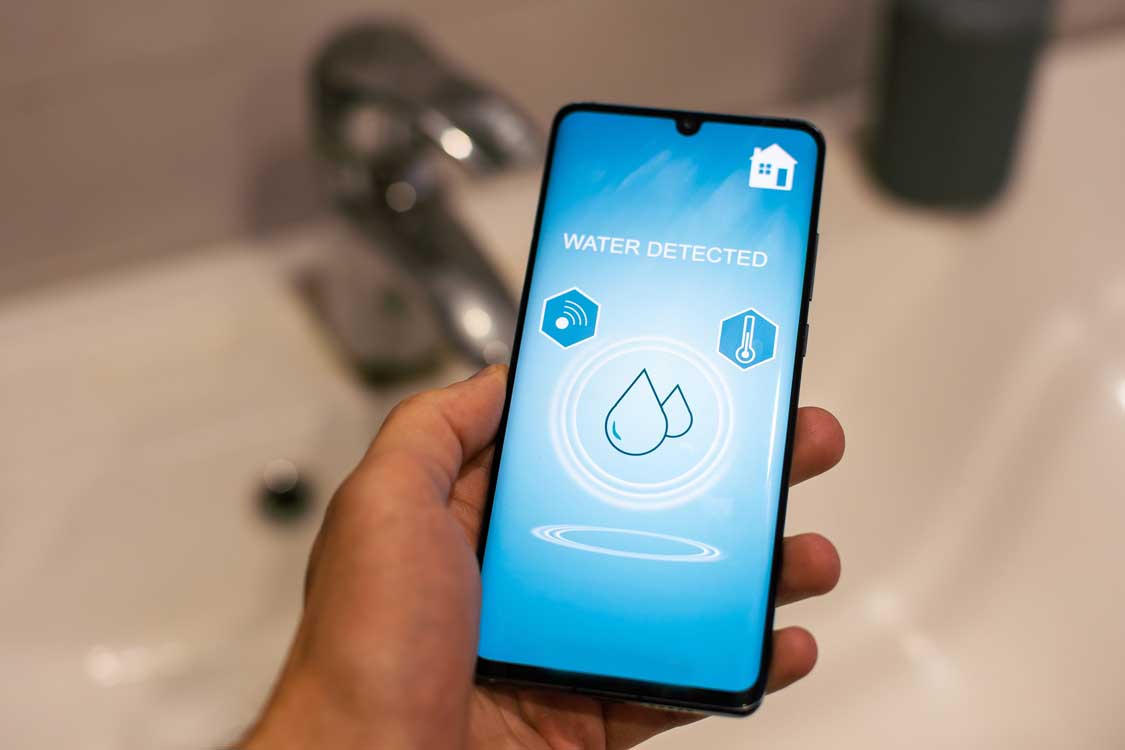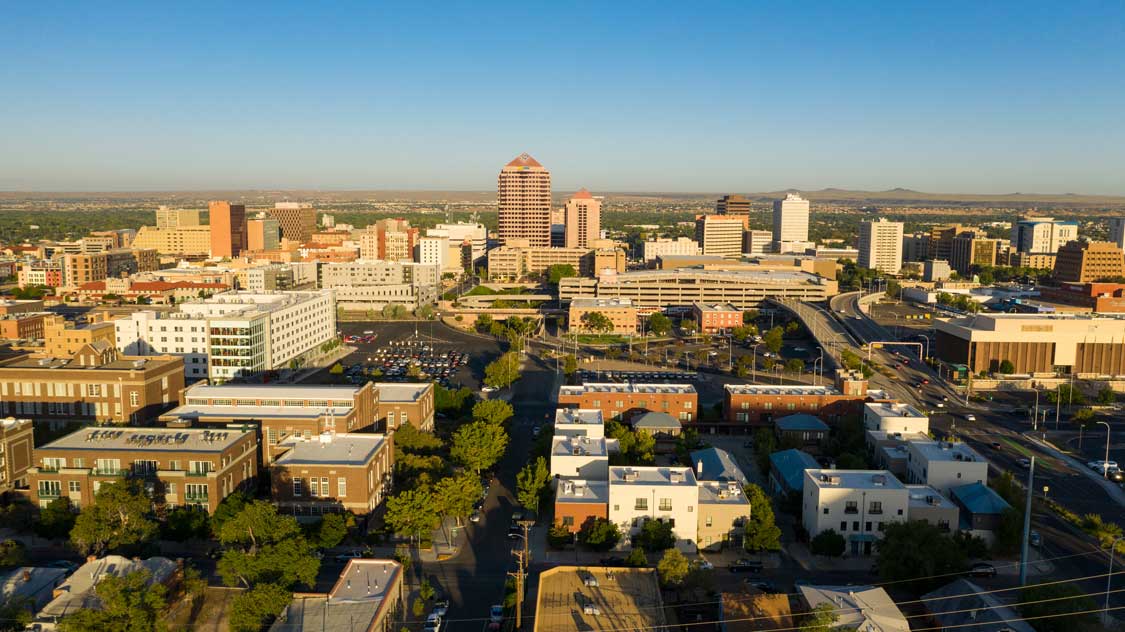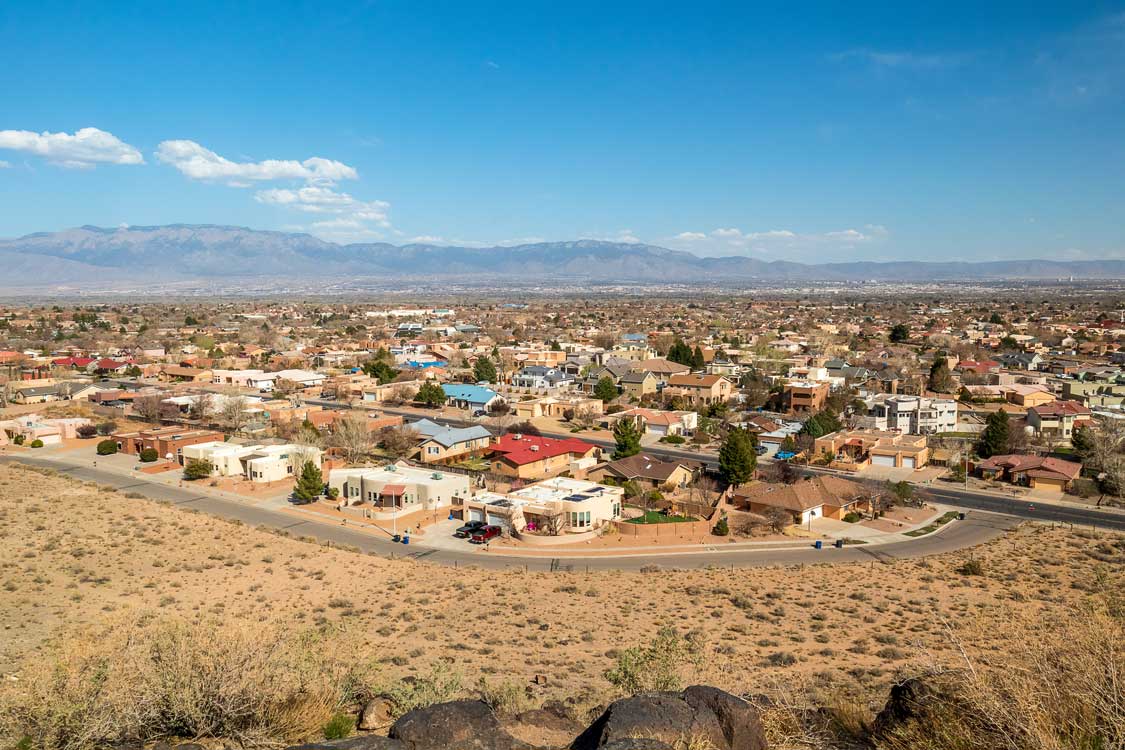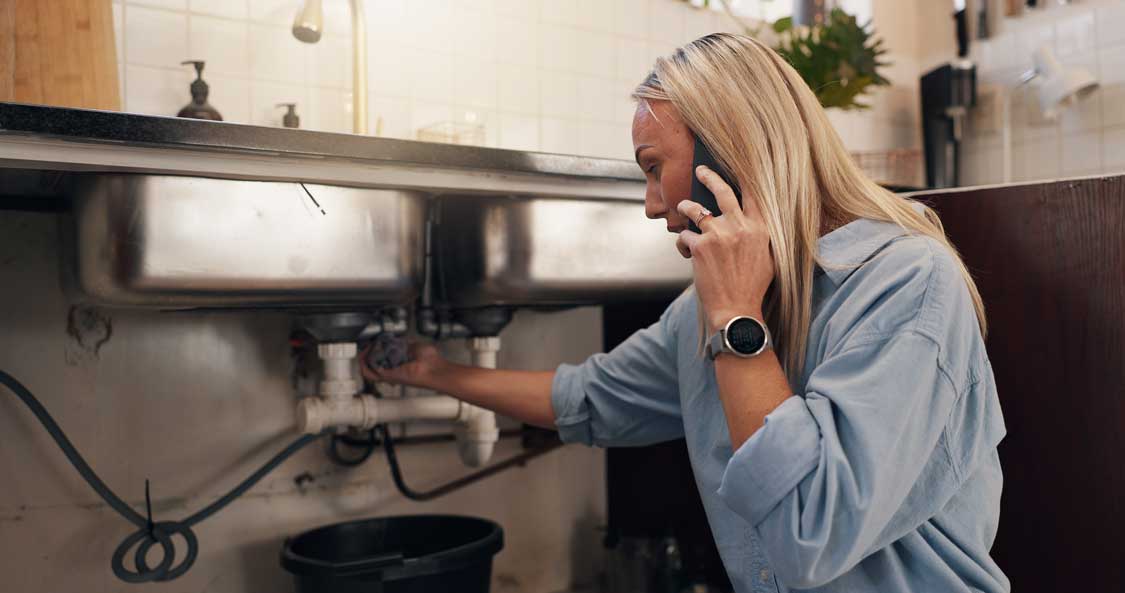Heavy thunderstorms in Albuquerque, Rio Rancho, and Santa Fe can do more than rattle windows — they can quietly weaken your home’s plumbing. Older neighborhoods with galvanized water lines are especially vulnerable. When the rain clears, hidden damage might already be forming underground. Your trusted team at B. Carlson Heating, Air Conditioning & Plumbing is here to point out the signs that something isn’t right with your water line—so you can jump on it early and avoid bigger headaches later.
What is a Water Line?
Water lines are the vital underground pipes that bring clean, fresh water directly into your home from the municipal supply—essential for everything from your morning shower to cooking dinner and keeping your garden thriving. While these pipes perform the opposite job of sewer lines (which safely remove waste from your property), both systems share key vulnerabilities, particularly during the severe thunderstorms and weather events that frequently sweep through Albuquerque, Rio Rancho, and Santa Fe.
Flash floods and thunderstorms pose several serious threats to your water lines:
- Soil Shifting and Weight Changes – When storms dump several inches of rain quickly, the soil around water lines becomes waterlogged and heavy. This sudden weight can stress or completely move underground pipes, even those buried deep beneath your property. Homes with shallow lines or older galvanized steel pipes are especially vulnerable to cracking or joint failures.
- Erosion and Exposed Pipes – Fast-moving runoff can wash away soil around driveways, yards, and slopes, potentially exposing previously protected pipes. Without proper soil support, pipes may begin to sag, flex, or snap entirely. This damage commonly occurs near exterior water spigots, irrigation systems, and pipes installed near retaining walls throughout New Mexico properties.
- Municipal System Backups – When city drainage systems become overwhelmed during severe storms, water pressure can back up into private service lines, especially if check valves or backflow prevention devices are missing or failing. This unexpected pressure can damage seals and valves throughout your plumbing system, potentially contaminating your clean water supply.
- Debris Impact Damage – Stormwater carries branches, rocks, and other debris that can strike or crush exposed portions of your plumbing system. Crawl spaces, basements, and outdoor fixtures are particularly vulnerable. Outdoor hose bibs and irrigation systems often suffer the worst damage during severe weather events.
10 Signs Your Might Have Damaged Water Lines
After severe storms roll through our New Mexico communities, your water lines may be silently struggling underground. Knowing what to look for can save you thousands in emergency repairs and prevent water damage to your property. Here are the key warning signs that suggest your water line might have been compromised during recent thunderstorms—pay special attention if you live in an older neighborhood with galvanized plumbing.
1. Unexplained Increase in Your Water Bill
Sudden spikes in your water bill are often more than just a billing error. Storms can shift the ground, crack aging pipes, or loosen buried joints. When that happens, water starts leaking nonstop—even when you’re not home using it.
If your daily routine hasn’t changed but your water usage has, something underground may be working against you. Homes in Albuquerque with older plumbing setups tend to feel the impact sooner. Even a small, steady leak can waste thousands of gallons over time. That’s why it’s worth paying extra attention to your bill after major storms. When something doesn’t make sense, it usually means action is needed.
2. Puddles Forming in Your Yard
Rain-soaked grass is expected after a storm, but puddles that linger long after the skies clear are a different issue. Water pooling in the same spots—especially when there hasn’t been recent rainfall—often signals a leak beneath the surface.
Underground pipe damage can slowly saturate soil. In areas like Corrales or Placitas, shifting soil conditions only add to the problem. If one area in your yard keeps getting soggy or you catch the sound of water moving underground, it’s smart to call someone in. B. Carlson offers leak detection services designed to find the source before things get worse.
3. Decreased Water Pressure
Running a faucet shouldn’t feel like a trickle. When water pressure drops after a storm, there’s often a bigger issue at play. A break in your water line can reduce flow across your entire plumbing system.
Storms can shift soil just enough to damage older galvanized pipes, which are already more fragile. Slow-filling sinks and weak showers are more than just annoying—they’re often signs that the line feeding your home has been compromised. If your neighbors aren’t having the same problem, chances are the issue starts at your property line. B. Carlson can help you pinpoint the cause quickly and restore pressure where it belongs.
4. Discolored or Murky Water
Water should be clear. When it turns cloudy, brown, or yellow after a storm, something is likely contaminating your supply. Dirt and rust can slip in through cracks in damaged pipes, especially those made from older materials.
Galvanized pipes are more prone to corrosion, and storm runoff can push sediment where it doesn’t belong. If your tap water changes in color or clarity, especially in bathrooms or the kitchen, hold off on using it for drinking or cooking. Call us instead. We’ll inspect your plumbing and make sure your water is safe again.
5. Strange Noises in the Plumbing
Pipes shouldn’t gurgle, hiss, or bang without reason. If those noises show up after a thunderstorm, your water line might have taken a hit.
Air can get pulled into the system through cracks or breaks, causing odd sounds when water is running—or even when it’s not. These noises are often the first clue that something’s wrong behind the scenes. When your plumbing starts sounding different, it’s a good idea to let a professional take a closer look. The team at B. Carlson is trained to figure out whether it’s a harmless quirk or a more serious issue.
6. Damp Spots or Mold Growth Indoors
Leaks don’t always stay outside. When water from a damaged pipe sneaks into walls, ceilings, or floors, it leaves behind clear signs—if you know where to look.
Moisture may go unnoticed for a while, especially behind drywall or under flooring. Over time, the dampness creates the perfect environment for mold. If you catch a musty smell, see paint starting to peel, or find darkened patches on surfaces, chances are water is coming in from somewhere it shouldn’t. Mold isn’t just a nuisance—it can affect your air quality, too. B. Carlson can track down the leak and fix the issue before it spreads further.
7. Visible Rust or Corrosion on Pipes
Exposed pipes in areas like basements, garages, or utility rooms can tell a story after a storm. Rust spots, flaking metal, or greenish buildup often point to long-term moisture exposure—and possibly a leak.
Storms can raise humidity and trap water in places that don’t dry quickly. For galvanized pipes, that added moisture speeds up corrosion. If rust is visible, it’s not just a cosmetic problem—it usually means the pipe is weakening. B. Carlson can assess the damage and lay out your best options for repair or replacement.
8. Unexpectedly Lush Patches in Your Lawn
A patch of grass that suddenly grows faster or looks greener than the rest of your yard isn’t always a stroke of luck. Leaks from a damaged line can act like an underground sprinkler, feeding the roots in just one area.
If your lawn starts showing uneven growth, or if moss appears in one spot, extra water is probably to blame. That kind of leak doesn’t just waste resources—it can also shift soil, damage walkways, and affect your home’s foundation. B. Carlson has plenty of experience spotting and solving yard leaks before they lead to bigger issues.
9. Foundation Cracks or Shifts
Storms can do more than knock over tree branches. When water from a leaking line seeps into the soil beneath your foundation, the ground can shift—and that can trigger structural changes.
New cracks in walls, stuck doors or windows, or sloping floors often point to changes happening below your home. If these signs show up after a storm, it’s worth investigating. A hidden leak might be eroding the support under your foundation. Our team at B. Carlson can take a deeper look and find out if your plumbing is playing a role.
10. Muddy Water Flowing into Streets or Gutters
Seeing water in the street right after a storm is normal. But if you’re spotting muddy runoff days later—especially if it seems to come from your yard or driveway—something underground may be leaking.
Water line breaks near the edge of your property often show up as bubbling water near sidewalks or unusual puddles around your home. If water keeps flowing when the weather’s been dry, don’t ignore it. B. Carlson helps Albuquerque homeowners trace the source and fix the problem with care and precision.
Act Fast with B. Carlson Heating, Air Conditioning & Plumbing
Don’t wait for a small leak to turn into major damage. At B. Carlson, we specialize in expert leak detection and water line repairs, including excavation when needed. Our team understands Albuquerque’s landscape and plumbing challenges—and we’re ready to help when you need it most.
Call us at 505-349-4409 to get started. Count on your best friend in home services to keep your plumbing safe, no matter what the weather brings.







